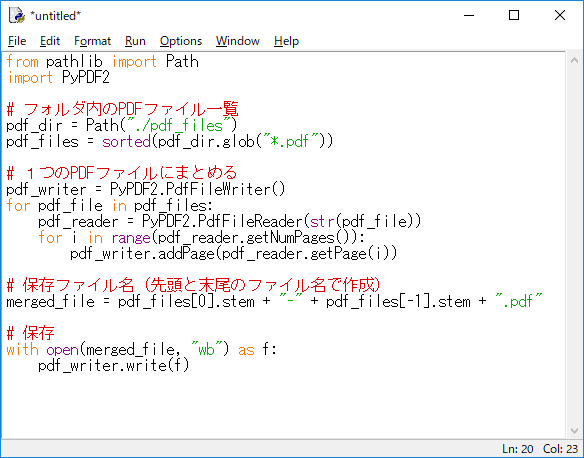

setHeader ( "Conversion of HTML text to PDF" ) pw. """ pw = PDFWriter ( "HTMLTextTo.pdf" ) pw. This is also text within the body element but not within any paragraph. Hey there, how do you do? The quick red fox jumped over the slow blue cow. html_doc = """ Test file for HTMLTextToPDF This is text within the body element but outside any paragraph. write ( "write it to pdf_file \n " ) def main (): # Create some HTML for testing conversion of its text to PDF.

Written in Python and requires the open source ReportLab toolkit. Has both a library for developers to use, and a set of command-line and GUI tools for all users.
#Python 3 pdfwriter xtopdf pdf#
write ( "which will extract only the text from html_file and \n " ) sys. def go (inpfn, outfn): reader PdfReader (inpfn, decompressFalse) page, reader.pages writer PdfWriter () writer.addpage (adjust (page)) IndirectPdfDict (reader.Info) writer.write (outfn) Example 6 0 Show file File: creatematchsheets. xtopdf is a toolkit for PDF creation / conversion from other formats. Beautiful Soup is at: xtopdf is at: Guide to using and installing xtopdf: Author: Vasudev Ram - Copyright 2015 Vasudev Ram """ import sys from bs4 import BeautifulSoup from PDFWriter import PDFWriter def usage (): sys. It uses the Beautiful Soup library, v4, to parse the HTML, and the xtopdf library to generate the PDF output.
#Python 3 pdfwriter xtopdf how to#
It only provides a write() method, which saves the PdfReader object to a pdf output file.""" HTMLTextToPDF.py A demo program to show how to convert the text extracted from HTML content, to PDF. However, the writer class provided by pdfrw (pdfrw.PdfWriter) does not allow for such an operation. I would like to convert it to a filestream (a bytes array, or an io.BytesIO object if you will), and return it in that form. Now, when we get to the # marker, I have a filled_pdf variable which is a PdfReader object. The template_pdf variable uses a PdfReader object from the pdfrw library. So, as you see the FormFiller constructor receives an array of bytes. Value_mapping : dict = mapper.getValues()įilled_pdf : pdfrw.PdfReader = self._fill_pdf_(self.filesteam, value_mapping) Template_pdf : pdfrw.PdfReader = pdfrw.PdfReader(input_pdf_filestream)
#Python 3 pdfwriter xtopdf code#
I currently have a piece of code like this: class FormFiller:ĭef _fill_pdf_(input_pdf_filestream : bytes, data_dict : dict): import PyPDF The next step is to initialize the class PyPDF2. It provides various functions that help us to write PDF The first step towards using this class is importing the PyPDF module. Vasudev Ram (vasudevram on Ohloh) is the author of xtopdf. PdfFileWriter in Python This class supports writing PDF files out, given pages produced by another class (typically PdfFileReader). import pandas as pd from pdfrw import PdfWriter wb pd.

Written in Python and requires the open source ReportLab toolkit. I am using pandas to read my excel file and inputing that dataset to PDFwriter to create pdf file. I have tested xtopdf with PDFWriter, but with this solution you need to read and iterate. I don't want to write the edited filestream to a local file. xtopdf is a toolkit for PDF creation / conversion from other formats.

The idea is that file opening and closing is going to most likely be handled by external code and so I want all the edits in my files to be done in memory. I'm not interested in writing the edited PDF to a file. The example is supposed to be a simplified python script showcasing how we could use the pdfrw library to edit PDF files with forms in them. I'm currently working on a simple proof of concept for a pdf-editor application.


 0 kommentar(er)
0 kommentar(er)
